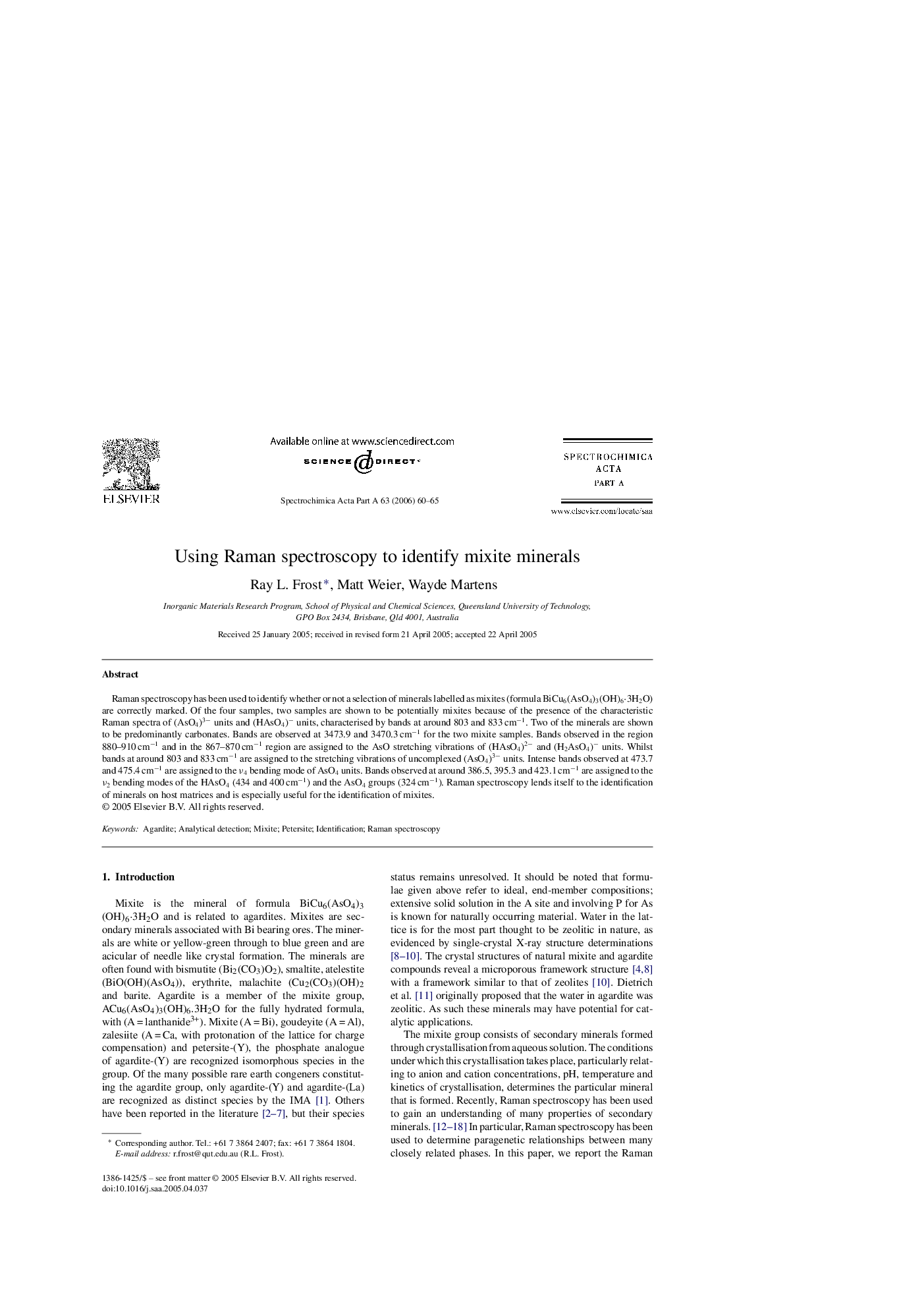| Article ID | Journal | Published Year | Pages | File Type |
|---|---|---|---|---|
| 1236892 | Spectrochimica Acta Part A: Molecular and Biomolecular Spectroscopy | 2006 | 6 Pages |
Raman spectroscopy has been used to identify whether or not a selection of minerals labelled as mixites (formula BiCu6(AsO4)3(OH)6·3H2O) are correctly marked. Of the four samples, two samples are shown to be potentially mixites because of the presence of the characteristic Raman spectra of (AsO4)3− units and (HAsO4)− units, characterised by bands at around 803 and 833 cm−1. Two of the minerals are shown to be predominantly carbonates. Bands are observed at 3473.9 and 3470.3 cm−1 for the two mixite samples. Bands observed in the region 880–910 cm−1 and in the 867–870 cm−1 region are assigned to the AsO stretching vibrations of (HAsO4)2− and (H2AsO4)− units. Whilst bands at around 803 and 833 cm−1 are assigned to the stretching vibrations of uncomplexed (AsO4)3− units. Intense bands observed at 473.7 and 475.4 cm−1 are assigned to the ν4 bending mode of AsO4 units. Bands observed at around 386.5, 395.3 and 423.1 cm−1 are assigned to the ν2 bending modes of the HAsO4 (434 and 400 cm−1) and the AsO4 groups (324 cm−1). Raman spectroscopy lends itself to the identification of minerals on host matrices and is especially useful for the identification of mixites.
